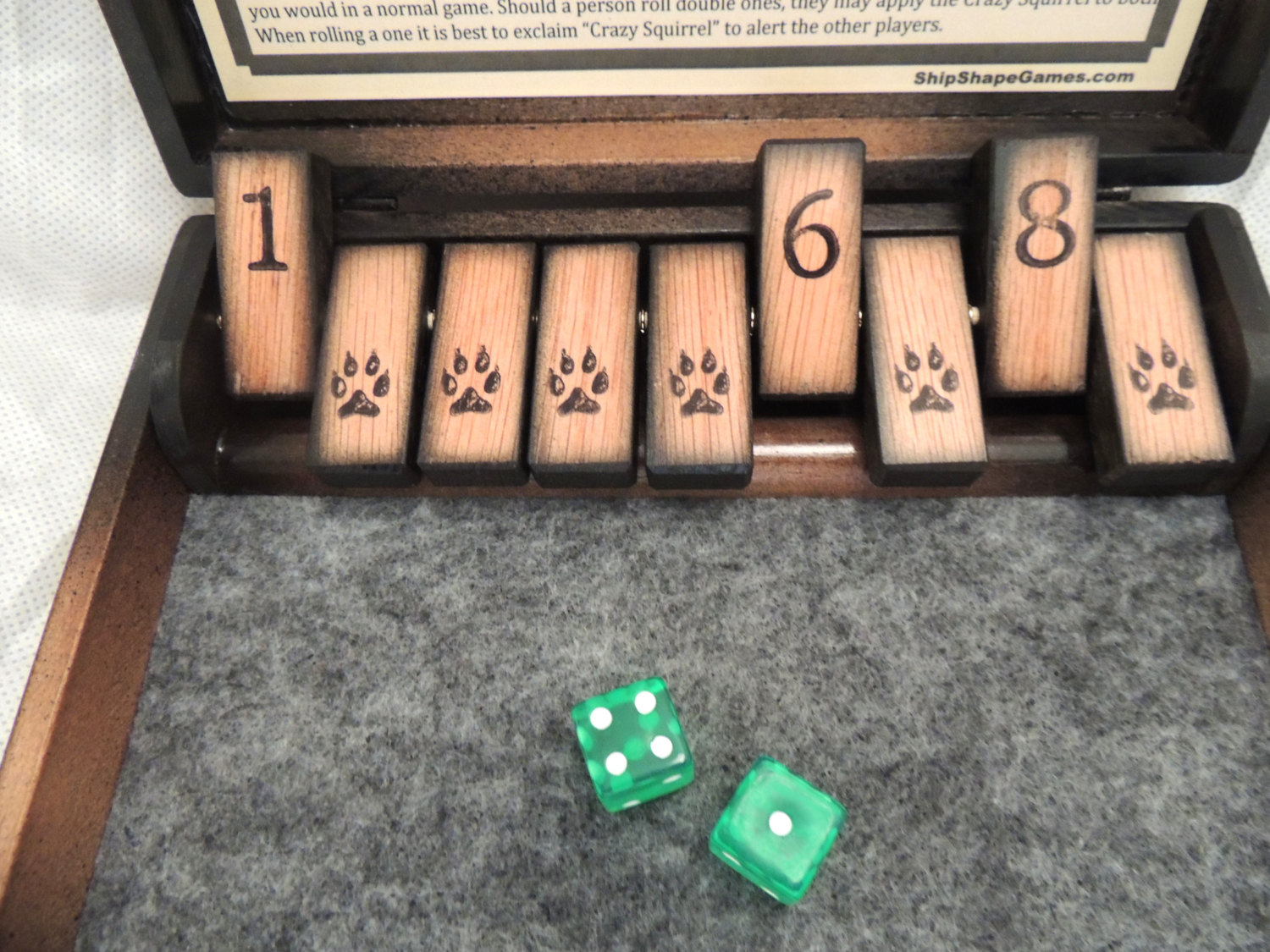Shut the Box
Players: 1-4
Ages: 6 and up
Purchase: Buy on Amazon (affiliate link) or make your own!
Math Ideas: Decomposition, addition, subitizing
Questions to Ask:
Which tiles can you shut?
What do you hope to roll?
What combinations of dice add up to 7?
Shut the Box is a classic game that has been played for decades in pubs throughout England. But don't worry, there is no drinking or gambling involved. Just some great, challenging mathematical play. In fact, this game is easy enough for a kindergartner to learn, but tough enough that I'm still trying to figure out how to reliably beat it!
How to Play
Shut the Box comes with two dice and a game board containing numbered tiles that can be opened or shut. If you don't feel like buying the board, the game is just as fun to play with a pair of dice and a pencil and paper.
The game starts with all the numbered tiles, from 1-9, open. The player rolls two dice and then shuts tiles whose numbers add up to the total on the dice. So if a player rolls a nine, as in the image below, she can choose to shut the 9 tile, the 8 and 1 tiles, the 6 and 3 tiles, and so on. She can't shut the 4, 3, and 2 tiles because the 2 tile has already been shut.
The player then rolls again and shuts a new set of tiles to match her new number. Her turn ends when she can no longer shut tiles to match her number. In the image at right, the player's turn is over since she cannot shut any combination of tiles that add to 5. To find her score, she adds up the numbers on all the tiles that remain open (1+6+8=15 in this case), then passes the dice to the next player. The player with the lowest final score wins.
I even made a gameplay video so you could see the game in action!
Where's the Math?
As in our first newsletter about Sorry, this game is a great way for kids to work on decomposing numbers. Decomposing a number is the process of breaking it into smaller pieces. This is one of the most useful and flexible mental math strategies that a child can learn. Sometimes, as in a problem like 98 + 37, you can decompose one number and use it to make the problem easier. You could split 37 into 35 and 2, then add 2 + 98 to get 100 before adding the 35 to get 135.
These mathematical moves might feel like second nature to many adults, but it takes lots of experience to become a fluent mental mathematician. Kids need practice seeing the five and the two within the number seven. When they roll a 5 and a 4 to get nine, they have to think hard about what other combinations of numbers add to nine.
By the end of a game of Shut the Box, your kid will have done more mental math than if they had completed a dull worksheet full of addition problems. And it won't have even felt like work! It's just the skill they have to hone in order to get better at the game.
Questions to Ask
Since the game is so situational, the best questions are the ones that come up midway through the game. Let's say you are at a point in the game where only three tiles are open: the 3, the 4, and the 6.
At this point, you could ask your child: What do we hope to roll on this next turn? If we want to win the game in two turns, what rolls do we need? (3 and 10, 4 and 9, or 6 and 7)
If your child is a little older, you can probe further. What do all those number combinations have in common? And which one do you think is the easiest to roll? Why? (The 7 and 6 is easiest to roll, by the way)
You could also pose general questions about the game. For example, what is the fewest number of rolls needed to completely shut the box? What would you have to roll in order to beat the game? If you roll double sixes, what combinations of boxes can you shut?
Regardless of what you ask your kids, this game is inherently mathematical. Even if they play the game solitaire, they are getting a rich math experience. Shut the Box game is fun, strategic, and HARD. Enjoy.
Buy Shut the Box on Amazon (affiliate link)



